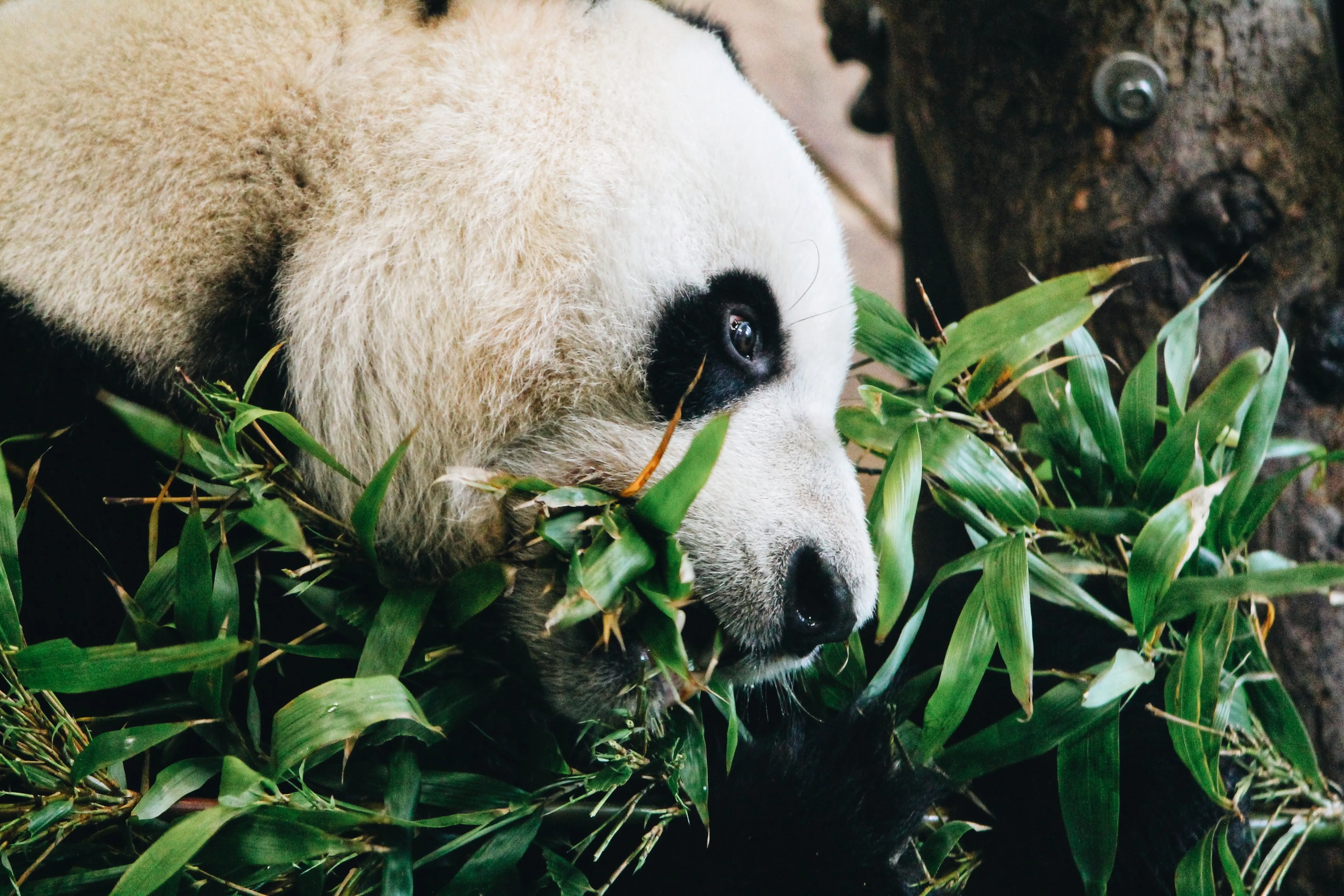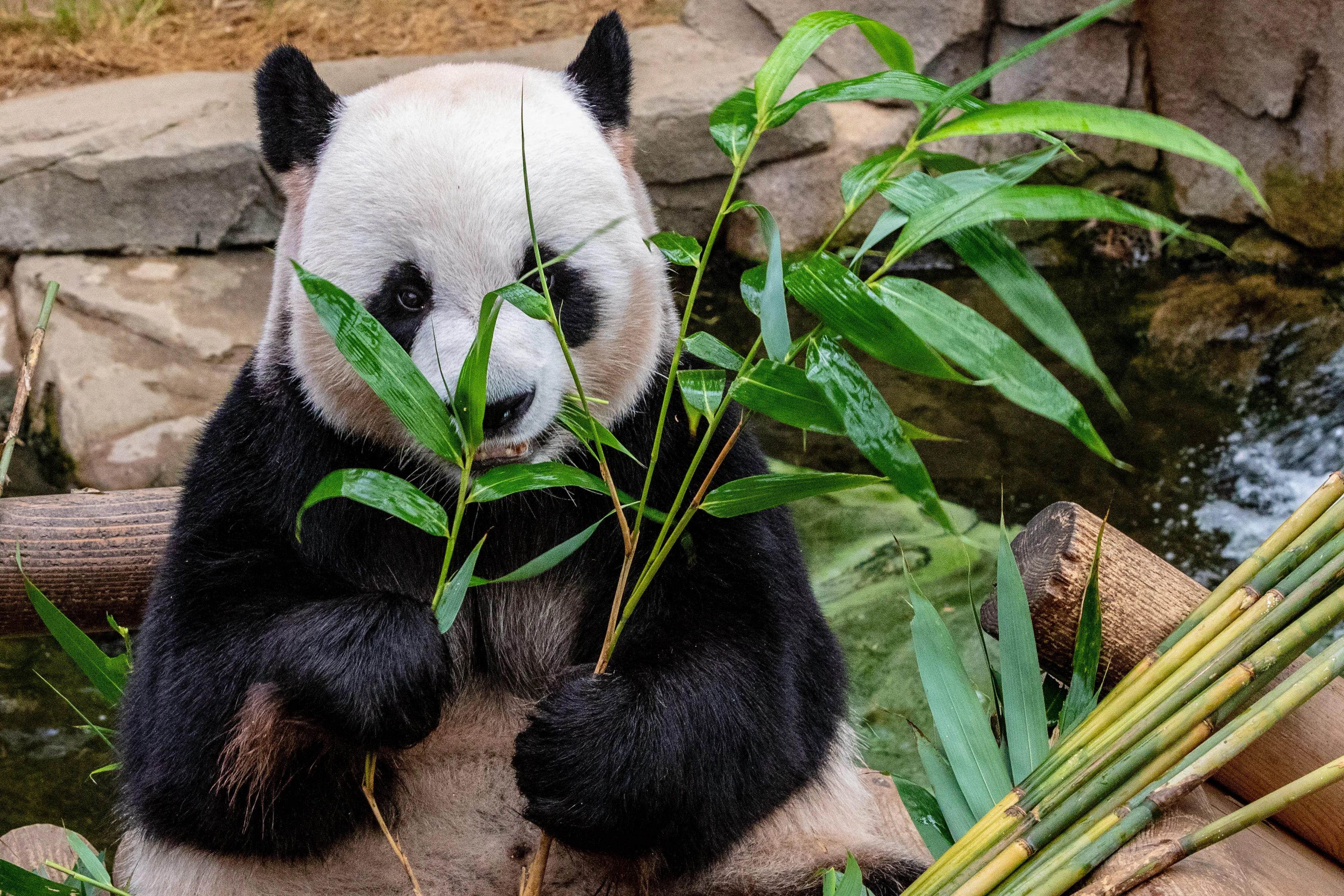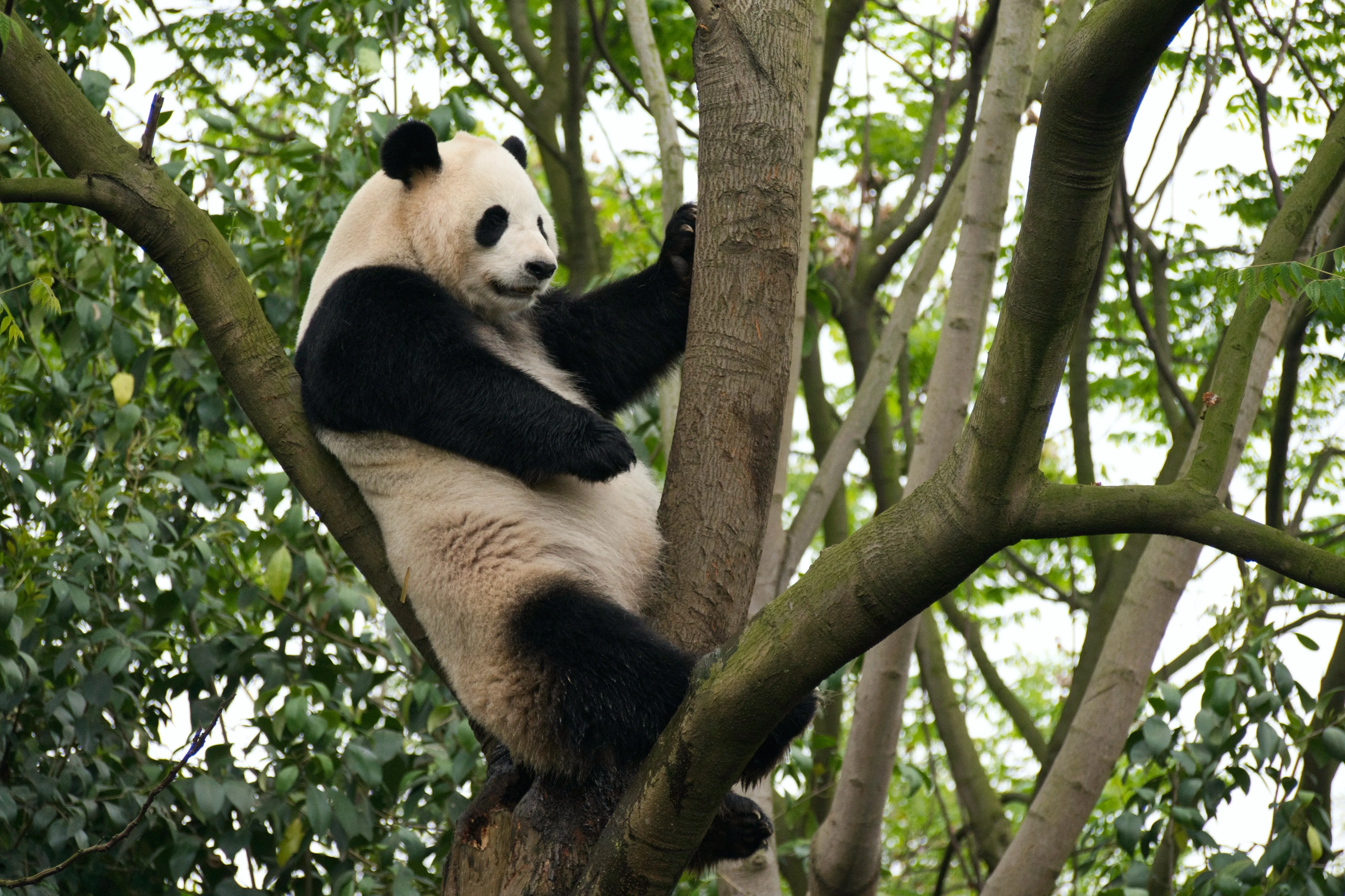Pandas and Bamboo: A Match Made in Nature
Pandas are synonymous with bamboo because bamboo constitutes a major portion of their diet.
- Bamboo is a fast-growing plant, which is important for pandas because they need to eat a lot of food to survive. Bamboo can grow up to 3 feet in a day!
Pandas are known as bamboo specialists, relying almost exclusively on bamboo for their nutritional needs. This strong association between pandas and bamboo is due to their unique digestive system and bamboo's abundance in their natural habitats.
Bamboo provides pandas with the necessary nutrients, fiber, and water content they require. It is a low-calorie and high-fiber food source that helps pandas meet their energy needs while maintaining a herbivorous diet.

- Pandas have special adaptations that help them eat bamboo. Their jaws are strong and their teeth are sharp, which helps them to chew through the tough bamboo stalks. They also have a long tongue that helps them to reach the leaves and shoots of bamboo.
The bamboo species consumed by pandas is rich in cellulose, which requires specialized digestive enzymes to break down. Pandas have evolved to possess specific adaptations, such as enlarged molars and strong jaw muscles, to efficiently process and consume bamboo.
- Pandas are herbivores, which means they only eat plants. Bamboo is their main source of food, and they can eat up to 30 pounds of bamboo per day!
The dependence of pandas on bamboo is further emphasized by the fact that they consume vast quantities of it. Adult pandas can consume up to 20 to 30 pounds (9 to 14 kilograms) of bamboo each day, as they need to compensate for the low nutritional value of the plant.
Pandas spend a significant portion of their time foraging for bamboo, as it provides them with sustenance and hydration.
The close association between pandas and bamboo extends beyond their diet.

- The relationship between pandas and bamboo is a mutually beneficial one. Pandas help to spread bamboo seeds when they eat the plant, and bamboo provides pandas with food and shelter.
Pandas have adapted to bamboo-rich habitats, such as the mountainous regions of China, where bamboo forests flourish.
These forests provide pandas with the necessary habitat and cover, as well as a suitable environment for bamboo growth.
The availability of bamboo influences the distribution and range of pandas, shaping their behavior and lifestyle.
Due to their exclusive reliance on bamboo, pandas have become an iconic symbol of bamboo conservation and environmental preservation.
Their unique dietary preferences have drawn attention to the importance of preserving bamboo forests, not only for the survival of pandas but also for the overall biodiversity of their ecosystems.
As a result, pandas have become synonymous with bamboo, representing the delicate balance between wildlife and their natural habitats.

